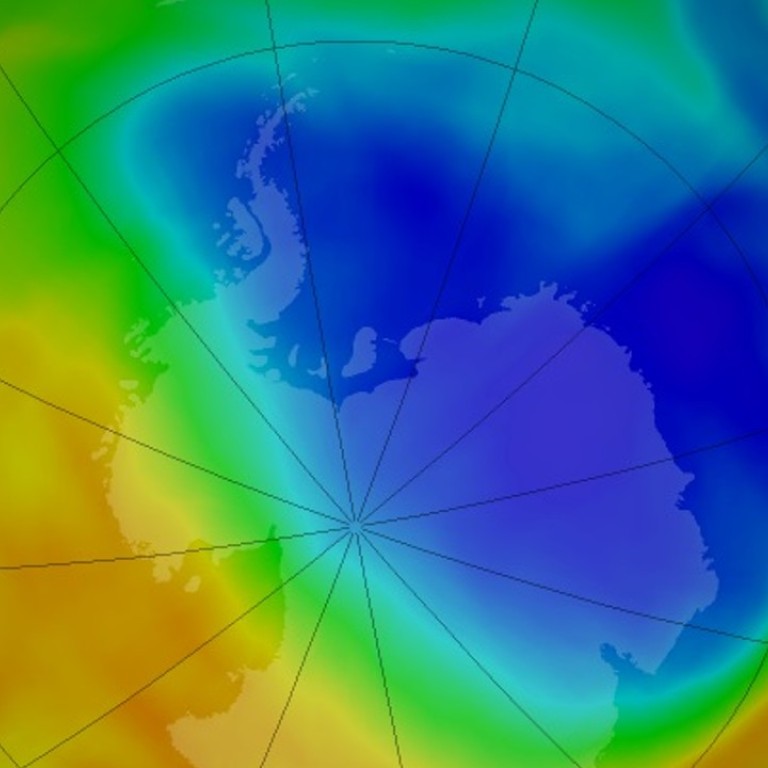
Earth's ozone hole shrivels to smallest since 1988 – and that’s a good thing
The ozone hole hit its highest in 2000 at 29.86 million square kilometres
Here’s a rare piece of good news about the environment: the giant hole in the Earth’s protective ozone layer is shrinking, and has shrivelled to its smallest peak since 1988, Nasa scientists said.
The huge hole reached its maximum this year in September, and Nasa said it was 19.6 million square kilometres wide. The hole size shrinks after mid-September.
This year’s maximum hole is more than twice as big as the United States, but it’s 3.3 million square kilometres less than last year and 8.5 million square kilometres smaller than 2015.
Paul Newman, chief Earth scientist at Nasa’s Goddard Space Flight Centre, said stormy conditions in the upper atmosphere warmed the air and kept chemicals chlorine and bromine from eating ozone. He said scientists haven’t quite figured out why some years are stormier – and have smaller ozone holes – than others.
“It’s really small this year. That’s a good thing,” Newman said.
Newman said this year’s drop is mostly natural but is on top of a trend of smaller steady improvements likely from the banning of ozone-eating chemicals in a 1987 international treaty.
The ozone hole hit its highest in 2000 at 29.86 million square kilometres.
Ozone is a colourless combination of three oxygen atoms. High in the atmosphere, about 11 to 40 kilometres above the Earth, ozone shields Earth from ultraviolet rays that cause skin cancer, crop damage and other problems.
Scientists at the United Nations a few years ago determined that without the 1987 treaty by 2030 there would have been an extra 2 million skin cancer cases.
They said overall the ozone layer is beginning to recover because of the phase-out of chemicals used in refrigerants and aerosol cans.
Associated Press, The Washington Post
